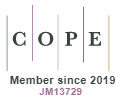Review and Restructuring of Contemporary Practices in Architecture Design Studio Education
DOI:
https://doi.org/10.15415/cs.2015.31003Keywords:
Innovative Practices, Design Studio Communication, Design Studio Evaluation as Driver, Four-dimensional Learning, Smart TechnologyAbstract
The paper is based on the premise that a 360 ° restructuring of the existing architecture education system is required to bridge the wide gap between academia and the practical world and equip students to meet national and global challenges. The current field practices are driven by competitive markets and innovations designed to upgrade obsolescent of technologies. Architecture schools act as living laboratories for envisaging the roadmap to resolve issues at the community, city, national and transnational levels. They should act as avantgarde for innovative practices by students, disseminating knowledge and pushing boundaries for experimentation -- all as part of a process for boosting development and inclusive growth. A smart education system can be achieved by integrating Information and Communication Technology (ICT) and provide an interface between students and industry. The paper focuses on identifying challenges and barriers in the existing education system and suggests recommendations for improving the quality of human resource. Its purpose includes delivery of high performance and healthy growth of stakeholders. By exploring information and technology, transparency and participatory role of various actors for networking, team building, monitoring and reflective tools, the paper examines the contextual relevance of the existing approaches to various aspects of learning, teaching and evaluation systems, going on to suggest a paradigm shift in these.
Downloads
References
[2] BARRY, D. (2014) Critical Thinking for Architects: Developing a Project Premise and Concept. Available from: http://archprac.cua.edu/aprp/olce/papers/items/think.htm [Accessed: 15 January 2015].
[3] FATHI, A. (2014) Integrated Building Design Studio: A Cumulative Methodology to Accommodate and Apply Different Design Approaches in Architectural Education Stage. International Journal of Innovative Research in Science, Engineering and Technology. 3(2). p.8950-8960.
[4] HASSONPOUR, B., UTABERTA, N. and SIRJANI, R. (2011) Investigation in Effective Assessment Models in Architecture Design Studios, National University Malaysia as Case Study. Australian Journal of Basic and Applied Science, 5(9), p.571-577.
[5] KUMAR, P. (2015) The 360 ° Performance Review for Blueprint of Technical Education in Universities. National Seminar on Technology, Innovation & Entrepreneurship in 21st Century. Deenbandhu Chottu Ram University of Science and Technology Murthal, Sonipat, Haryana, India.
[6] OSTWALD, M. J. and WILLIAMS, A. (2008) Understanding Architectural Education in Australasia. Volume1: An Analysis of Architecture Departments, Programs. Academics and Students. ALTC, Sydney, Australia. Available from: www.researchgate.net/.../259953138_ Understanding_Architectural_Educati... [Accessed: 15 February 2015].
[7] SIDAWI, B. (2014) The Tale of Innovation in Two Departments of Architecture in the Kingdom of Saudi Arabia, International Journal of Architecture, Engineering and Construction. 3(4). p.275-286
[8] IIA-NC (2014) Seminar on Architectural Education: Turmoil - Opportunities - Future Course. Seminar invitation for architectural education. Available from: http://www.web.iianc.org/?p=443. [Accessed: 12 February 2015].
Downloads
Published
Issue
Section
License
Articles in the Journal of Creative Space (Creat. Sp.) by Chitkara University Publications are Open Access articles that are published with licensed under a Creative Commons Attribution- CC-BY 4.0 International License. Based on a work at https://cs.chitkara.edu.in. This license permits one to use, remix, tweak and reproduction in any medium, even commercially provided one give credit for the original creation.
View Legal Code of the above-mentioned license, https://creativecommons.org/licenses/by/4.0/legalcode
View Licence Deed here https://creativecommons.org/licenses/by/4.0/
 |
Journal of Creative Space by Chitkara University Publications is licensed under a Creative Commons Attribution 4.0 International License. Based on a work at https://cs.chitkara.edu.in/ |







